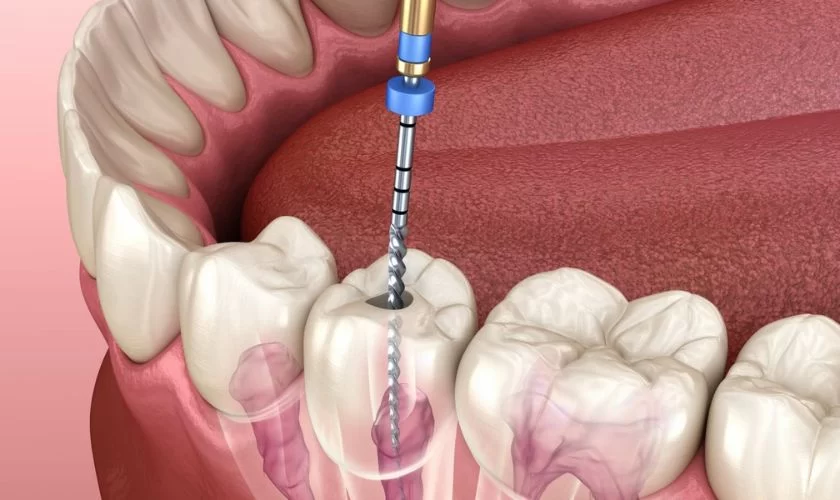
Pulp Restoration: Restoring Your Tooth Health with Advanced Dental Techniques
- What Is Pulp Restoration?
- Why Is Pulp Restoration Important?
- How Is Pulp Restoration Done?
- Types of Pulp Restoration
- Real-Life Case: A Successful Pulp Restoration
- Why Choose Dentistry Toothtruth for Pulp Restoration?
What Is Pulp Restoration?
Pulp restoration is a vital dental procedure aimed at saving a tooth that has experienced significant damage to the soft tissue inside the tooth, known as the pulp. The pulp consists of nerves, blood vessels, and connective tissue that are essential for the health of the tooth. When the pulp becomes infected or damaged, it can lead to intense pain and tooth loss if not treated.
In pulp restoration, the damaged pulp is removed, and the space is cleaned, sealed, and filled with a biocompatible material to preserve the tooth's functionality. This procedure is most commonly performed in root canal therapy, which allows the tooth to be saved without extraction.
Why Is Pulp Restoration Important?
Pulp restoration plays a crucial role in preserving a natural tooth and preventing the need for extraction. Here's why pulp restoration is so important:
- Pain Relief: When the pulp is damaged or infected, it causes significant pain. Pulp restoration removes the source of pain and prevents further discomfort.
- Prevention of Tooth Loss: By treating the damaged pulp, pulp restoration helps save the tooth and prevent it from being extracted.
- Improved Function: Restoring the pulp helps maintain the tooth’s ability to function properly, allowing for normal chewing and speaking.
- Long-Term Oral Health: Addressing pulp issues early can prevent more serious dental problems in the future, contributing to better long-term oral health.
In cases where the pulp is not restored, the tooth may eventually need to be extracted, which can affect the surrounding teeth and jawbone. Therefore, pulp restoration is essential to maintaining the integrity of your smile.
How Is Pulp Restoration Done?
The pulp restoration procedure typically involves the following steps:
- Diagnosis: The dentist will examine the tooth and perform X-rays to determine the extent of the pulp damage.
- Anesthesia: Local anesthesia is applied to numb the area and ensure the patient feels no discomfort during the procedure.
- Pulp Removal: The damaged or infected pulp is carefully removed using specialized tools. The inside of the tooth is cleaned thoroughly to eliminate bacteria and debris.
- Sealing the Tooth: After cleaning, the space is filled with a biocompatible material, such as gutta-percha, to seal the tooth and prevent future infection.
- Restoration: Finally, the dentist will place a crown or filling on the tooth to restore its shape, function, and strength.
The procedure is typically performed in one or two visits, depending on the severity of the damage. Pulp restoration helps prevent the need for tooth extraction and allows the tooth to continue functioning as normal.
Types of Pulp Restoration
There are several methods of pulp restoration, depending on the condition of the tooth and the extent of the damage. The most common types of pulp restoration include:
- Root Canal Therapy: This is the most common method of pulp restoration. It involves removing the infected pulp, cleaning the root canals, and sealing them to prevent further infection.
- Pulp Capping: In cases where the pulp is only slightly damaged, a dentist may use pulp capping. This involves placing a special material over the pulp to promote healing and avoid the need for more extensive treatment.
- Apicoectomy: If the infection persists after a root canal, an apicoectomy may be performed. This involves removing the tip of the root and sealing the area to prevent further infection.
Choosing the right type of pulp restoration depends on the severity of the damage and the overall health of the tooth. Your dentist will evaluate your situation and recommend the most appropriate treatment for you.
Real-Life Case: A Successful Pulp Restoration
Take the case of Sarah, a 38-year-old woman who was suffering from intense tooth pain due to an infected pulp. After visiting Dentistry Toothtruth, she was diagnosed with pulp damage and required a root canal. The procedure was performed with precision and care, and Sarah was able to return to her normal activities within a few days.
Thanks to the pulp restoration, Sarah’s tooth was saved, and she no longer experienced pain or discomfort. Today, her tooth functions just like any other, and she is grateful for the care she received at Dentistry Toothtruth.
Why Choose Dentistry Toothtruth for Pulp Restoration?
At Dentistry Toothtruth, we specialize in providing top-tier pulp restoration treatments to save your teeth and improve your dental health. Our experienced dental team uses the latest techniques and technologies to ensure a painless and effective procedure.
If you're experiencing tooth pain or suspect that you may have damaged pulp, visit Dentistry Toothtruth to schedule a consultation. Our expert team will guide you through the process and help you restore your tooth to its optimal health.







 Toothology5.0 (136 review)
Toothology5.0 (136 review) Dr. Pirooz Zomorrodi, DDS5.0 (10 review)
Dr. Pirooz Zomorrodi, DDS5.0 (10 review) Precision Oral Surgery and Implants4.0 (127 review)
Precision Oral Surgery and Implants4.0 (127 review) Brazos Valley Oral & Maxillofacial Surgery5.0 (1756 review)
Brazos Valley Oral & Maxillofacial Surgery5.0 (1756 review) Mission Hills Dentistry4.0 (1161 review)
Mission Hills Dentistry4.0 (1161 review) A Tooth Fairy Dental4.0 (463 review)
A Tooth Fairy Dental4.0 (463 review) The Importance of Oral Health Education During Pregnancy for a Healthy Pregnancy
The Importance of Oral Health Education During Pregnancy for a Healthy Pregnancy Best Tips for Brushing Your Teeth Properly for Healthy Gums: Essential Techniques for Oral Health
Best Tips for Brushing Your Teeth Properly for Healthy Gums: Essential Techniques for Oral Health Why Skipping Dental Checkups Can Lead to Bigger Oral Health Problems
Why Skipping Dental Checkups Can Lead to Bigger Oral Health Problems Advantages of Porcelain Dental Restorations
Advantages of Porcelain Dental Restorations How Can Diabetes Cause Tooth and Gum Problems? Preventing and Managing Oral Health Issues
How Can Diabetes Cause Tooth and Gum Problems? Preventing and Managing Oral Health Issues Healthy Habits for Promoting Good Oral Health and Hygiene: Tips for a Healthy Smile
Healthy Habits for Promoting Good Oral Health and Hygiene: Tips for a Healthy Smile